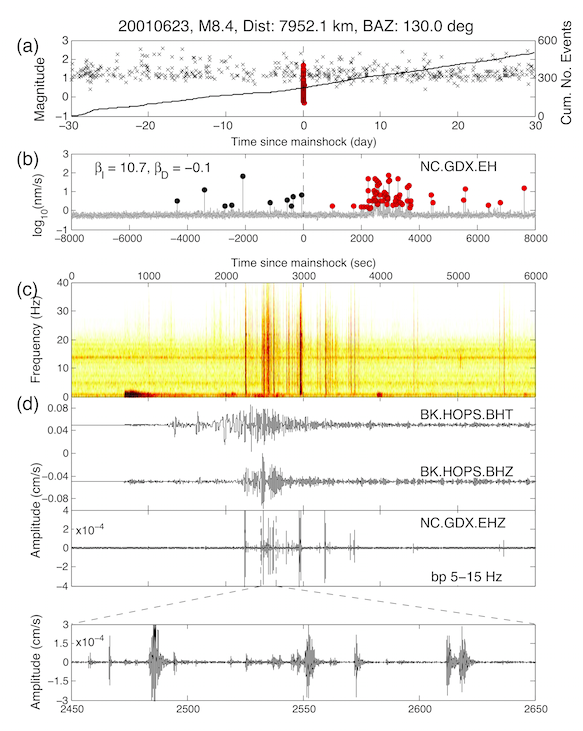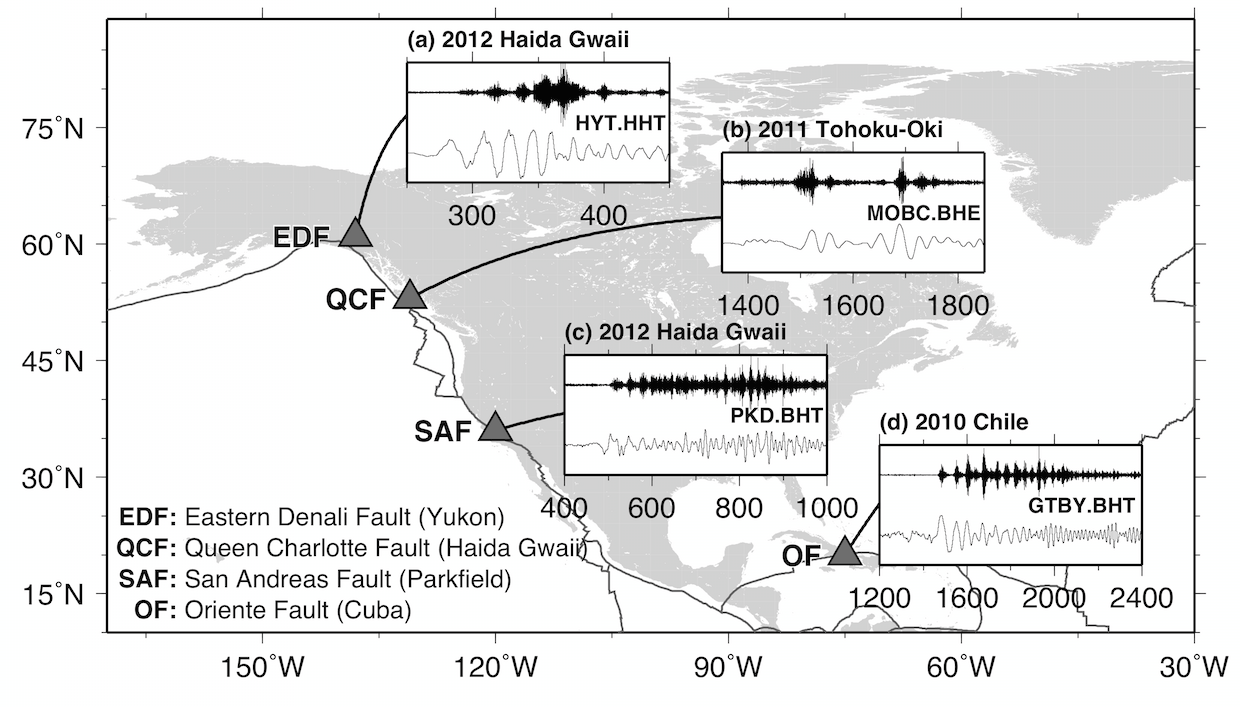Earthquakes generate stress changes in Earth's curst due to permanent deformation (static) and passing seismic waves (dynamic). Both static and dynamic stresses can load faults and push them closer to failure. In the near-field, static stress changes are capable of promoting failure on adjacent faults, resulting in increased seismic activity such as earthquakes. On the other hand, dynamic stresses from passing seismic waves are capable of triggering earthquakes well beyond the aftershock zone where static stress changes no longer dominate.
As part of my dissertation, I investigated dynamically triggered earthquakes in active geothermal/volcanic regions, and this work has been published in Journal of Geophysical Research: Solid Earth. In Aiken and Peng [2014], we investigated similarities and differences in earthquake triggering among three geothermal/volcanic regions of California: Long Valley Caldera, Coso Geothermal Field, and Geysers Geothermal Field.
Example of earthquake triggering in Geysers by the 23 June 2001 M8.4 Peru earthquake.
Earthquake activity around time of Peru earthquake.
Earthquakes on seismogram envelope function around time of Peru earthquake.
Earthquakes triggered by Peru earthquake surface waves, as seen on a spectrogram.
Surface waves of Peru earthquake.
Seismogram showing earthquakes triggered by Peru earthquake surface waves.
Triggered earthquakes have distinct P and S waves on the seismogram.

